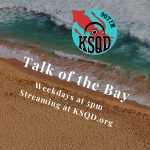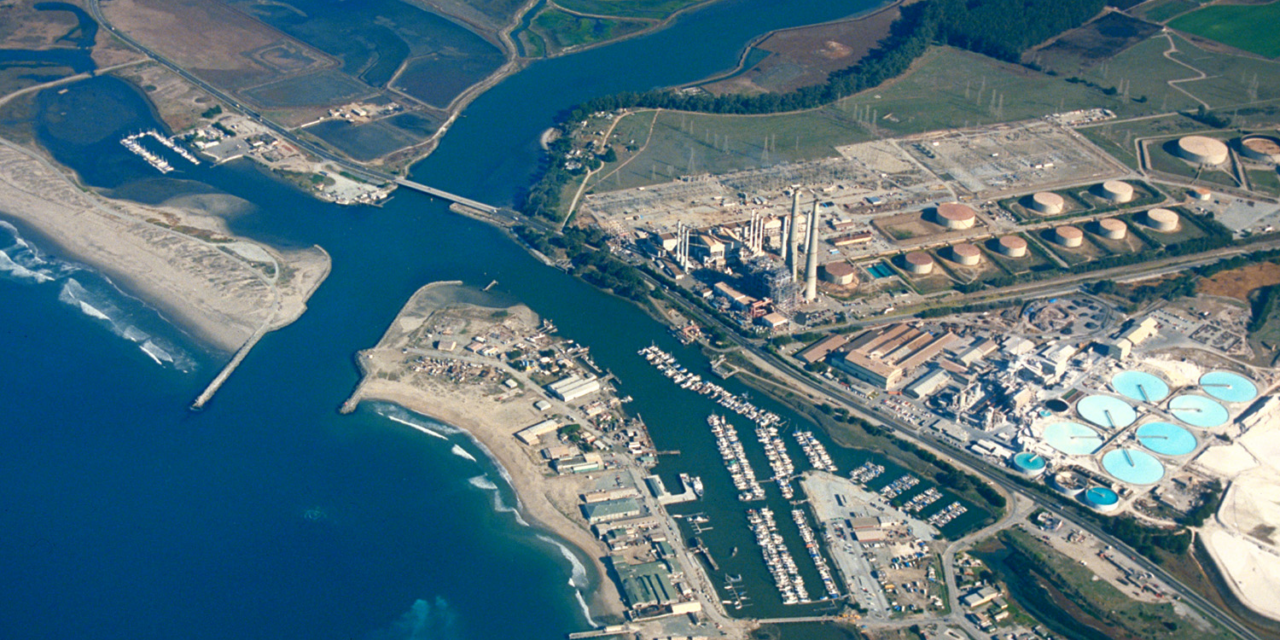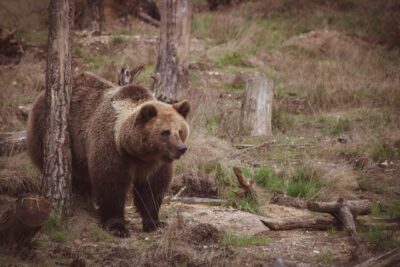
This is a feature created by Elnaz Sarbar Boczek , an intern from Cabrillo College
Elkhorn Slough is one of the largest estuaries in California that provides essential habitat for over 700 species, from sea otters to birds. This slough is part of the 10 percent of historical wetlands left in California. With recent floods, KSQD’s Elnaz Sarbar Boczek (BO-CHEK) wonders what kind of pollution has gone into this sensitive ecosystem.]
SFX: waves at the shore, continues over narration, dotted with bird sounds
It’s a sunny afternoon in Elkhorn slough. I am standing at the edge of the water along the 7 miles of water channels that reach Monterey Bay on one end and are flanked by tidal salt marshes at the other. Water is low and sandpipers are pecking for crabs on the exposed mudflats. White herons are standing still, waiting to ambush a frog or a salamander. Five majestic pelicans land gracefully on the water. It is a paradise for birdwatchers.
SFX: bird song, solo, silence, splash
Birds are not the only refugees at the Elkhorn slough. The executive director of the Elkhorn Slough, Mark Silberstein, says “it is a hotspot for biological diversity.”
[Silberstein, 00:23]
[We’ve identified over 100 species of fishes, 340 species of birds in a circle with a radius of 15 miles, encompassing Elkhorn Slough. The densest concentration of sea otters on the California coast now takes refuge in Elkhorn Slough. Big populations of harbor seals, sea lions. It’s a veritable circus of wildlife.]
Since 2018, Elkhorn slough has been designated as a protected Ramsar site. A wetland site designated to be of international importance. Still, it is surrounded by an industrial area and agricultural farm lands. In mid March, when the levee on Pajaro river breached after heavy rains, floodwater made it to the slough, potentially bringing chemicals with it. It also caused 60 gallons of waste oil to spill in a business two miles north of the slough. I went to the Elkhorn Slough reserve to find out if its vital ecosystem has been affected. Dave Feliz, the reserve manager, told me about the immediate effect of the flooding.
[Dave Feliz, 00:20]
[so the floods that we experience with the levee failure on the Pajaro river. Brought a whole bunch of freshwater into the back end of the Slough and so it flowed for several days and it was pretty much pure freshwater. So that has a direct impact on the animals that live in saltwater and so, tremendous loss of invertebrates. And you know these animals that live in the mud flats saltwater, all of a sudden they were covered in freshwater.]
Feliz says the invertebrates will come back but they are concerned about the presence of pesticide even from decades ago that could settle in the mudflats and affect the invertebrates and the animals that feed on them.
Mark Silberstein, the executive director of the Elkhorn Slough has seen this before.
[Mark Silberstein, 00:25]
[This happened once before in my tenure in 1995, the Pajaro River breached its levee after many days of heavy rain, right about the same day. I think it was March 10th, 1995. We saw the collapse of a Caspian Tern breeding colony. Caspian terns are the largest of the turns predatory diving seabirds that catch Fitch on the fly. They’re dramatic, beautiful. And the colony had grown.]
His description makes me want to see a Caspian tern. But the colony never came back to Elkhorn Slough. That year, there were no successfully hatched chicks Silberstein says. There were many broken eggs and chicks with deformities.The Department of Fish and Wildlife Lab in Sacramento found heavy loads of DDT & PCB’s which are known to thin egg shells.
[Mark Silberstein, 00:24]
[So it’s unclear exactly what the impacts are going to be from this go around. We have sampled water coming into the upper end of the Slough. We were able to get a few samples. The preliminary results came back without major loads of troublesome chemicals, but we’ve asked for a deeper, more sensitive scan to see if there’s anything else that might have come in.]
It is pretty tough to clean up the chemicals once it’s gone and dispersed in the environment, Silberstein says. It’s like closing the barn door after the horses left.
We have to prevent it. I ask about the oil spill. The samples so far haven’t detected it.
[Mark Silberstein, 00:14]
[Regional Water Quality Control Board, the State Water Control Board have standards for managing hazardous materials. I just don’t think anybody ever imagined that some of these places would be underwater.]
It looks like the single point that could have prevented the potential danger is the Pajaro levee that was scheduled to strengthen and never was.
For now, Dave Feliz says that they will be observing the breeding bird populations and the sea otters for any problems.
[Dave Feliz 00:14]
[Come on out here and enjoy the Slough. It’s free. We’ve got about 5 miles of trails. You can come out and go for a walk. You can walk up hill and you know, get your heart going and, you know, and see some cool birds and perhaps some sea otters off in the distance. So you definitely want to come to the Elkhorn Slough and bring your family.]
SFX: waves at the shore
For KSQD, this is Elnaz Sarbar Boczek.











